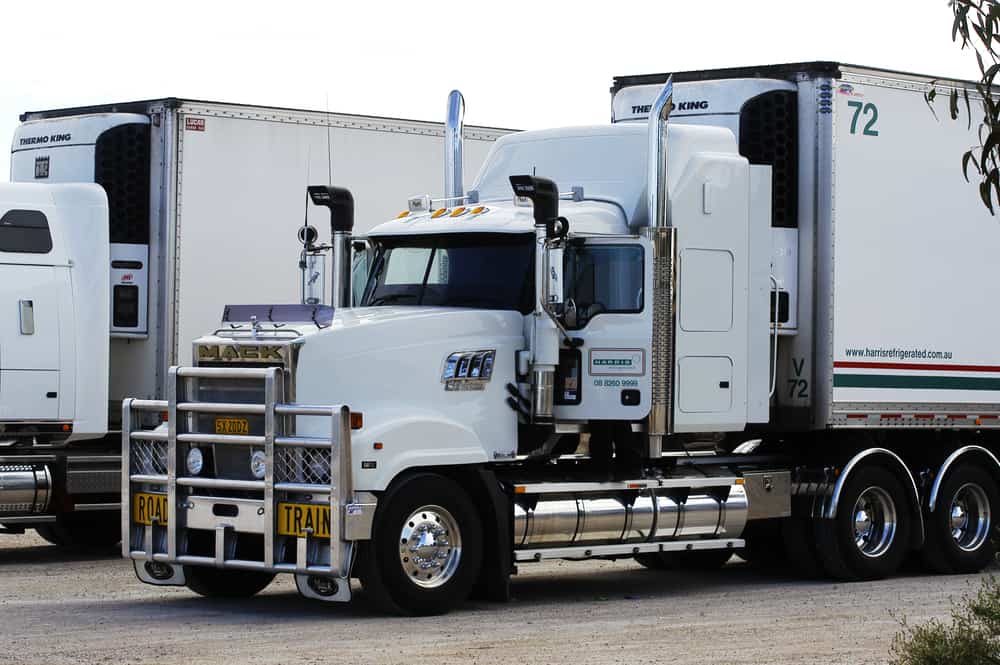SYDNEY, AUSTRALIA — A truck sales boom in Australia may have peaked this year. Although the year-to-date sales figures are up, the forward indicators are pointing toward a slowdown in 2019.
Overall sales of new trucks have boomed in the eleven months to November 2018 to stand at a record high of 38,173 units, according to the Truck Industry Council (TIC), a trade association. The figures encompass everything from relatively light enclosed cargo-carrying vans through to very large and heavy multiple-axle trucks.
The previous record high, of 38,131 heavy vehicles, was set back in 2007, according to the TIC. Only a further 1,827 sales are needed to breach the 40,000 mark, which would be the first time that level of sales has ever been reached. And, as December sales have averaged at 3,020 units for the last five years, the TIC envisages that the final sales figures for new trucks will actually be in excess of 41,000 units.
Speaking to FreightWaves yesterday, TIC chief financial technical officer Mark Hammond explained the reasons for this year’s sales boom and why 2018 is likely to represent the peak of the market in volume for truck purchases.
Market cycles
According to Hammond, the Australian truck market typically cycles on a seven year basis, but following the 2008 global financial crisis that cycle has lengthened to eleven years. The heavy truck sub-sector, in particular, is a market segment that has not seen a lot of growth in recent years, Hammond said.
He pointed out that as new heavy trucks are priced in the A$100,000 to A$250,000 (US$ 72,000 to $181,000) range, a heavy truck purchase is more expensive than purchases in the lighter truck markets. Heavy truck sales volumes were actually receding, Hammond added.
Market sentiment changes
But this year, Australian market sentiment changed in favour of truck purchases.
“The economy is strong, so now is a good time to replace trucks, that’s the feedback we’ve been getting. New trucks are typically more fuel efficient, have lower running costs and more safety features,” Hammond said.
“Safety is particularly important as the Chain of Responsibility begins to bite. Original equipment manufacturers will be increasingly required to explain why they do, or do not, have a particular safety feature,” Hammond explained.
“Chain of Responsibility” is an Australian transport safety concept that was enshrined in the domestic National Heavy Vehicle Law in October this year. Every party in the chain of responsibility that has any control or influence over any transport safety risk anywhere else in the chain has a shared duty with everyone else to ensure compliance with the National Heavy Vehicle Law.
Failure to reduce or eliminate that safety risk may be an offence. In the most extreme offences, individuals can be punished with five years jail and an A$300,000 fine. Companies can be fined as much as A$3 million.
Hammond added that purchases in the light and medium market segments were being fueled by the larger operators exiting transport. They required their sub-contractors to have new vehicles, which are safer and more environmentally friendly than older vehicles. He added that there were also branding and image concerns – the major operators didn’t want contractors to be driving around with their brands displayed on worn vehicles.
Going off peak…
But this boom in sales might represent the top of a market about to go into decline.
“We have noticed a slowdown in sales… we have seen some cooling off since August,” Hammond commented, pointing out that there has now been a substantial fleet replacement. Another factor indicating a likely downturn in sales next year is the advent of the forthcoming federal election, which is due to take place in the first half of 2019.
“A federal election always adversely affects business confidence. There are some concerns about a change of government and what it might mean. A change of government could increase overheads. We will see some nervousness leading up to the next election,” Hammond said.
Market data
TIC data shows that heavy truck sales (the very biggest of freight trucks, defined by the TIC as either multiple-axle vehicles or trucks over 39,000 kg gross combined vehicle mass) reached 13,158 sales in the year-to-end November, 22.4 percent up on the previous corresponding period.
One size category down, sales for medium duty trucks (with a gross vehicle mass greater than 8,000 kg and with a gross combined vehicle mass up to 39,000 kg) stood at 7,517 sales, a 13.1 percent gain on the previous corresponding period.
In the light duty truck market segment (vehicles with a gross vehicle mass between 3,501 kg and 8,000 kg) the TIC reports that the sector has been “performing well”. Year-to-November sales stood at 11,941 units, a 13 percent increase on the previous corresponding period.
Finally, the light duty van sector (enclosed cargo-carrying vans with a gross vehicle mass between 3,501 kg to 8,000 kg) has seen a total of 5,557 vans delivered in the year-to-November, up 3.2 percent on the same period last year.
The TIC is the trade association representing manufacturers, importers and component suppliers of trucks in Australia. The association as a whole counts many well known international trucking companies in its membership and the Council itself is composed of CEOs of member companies.











